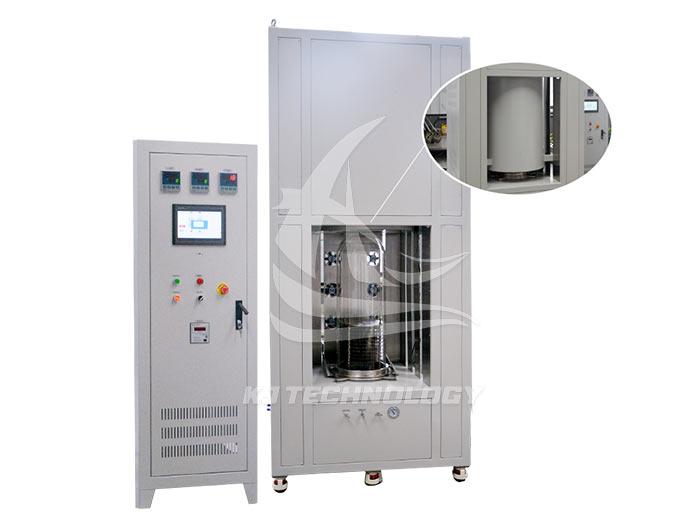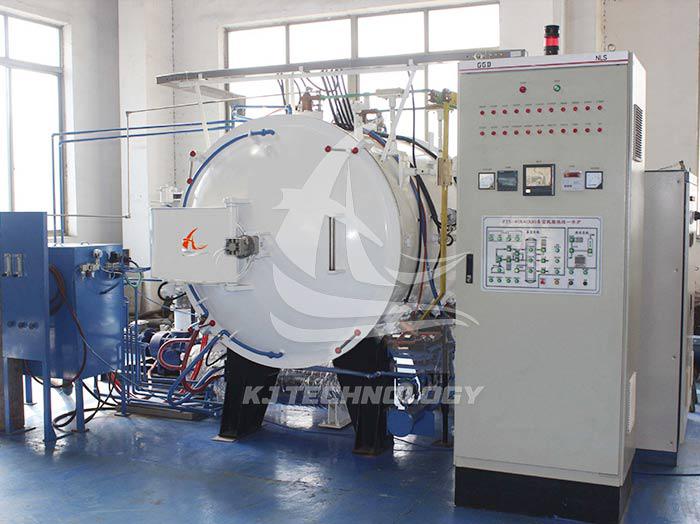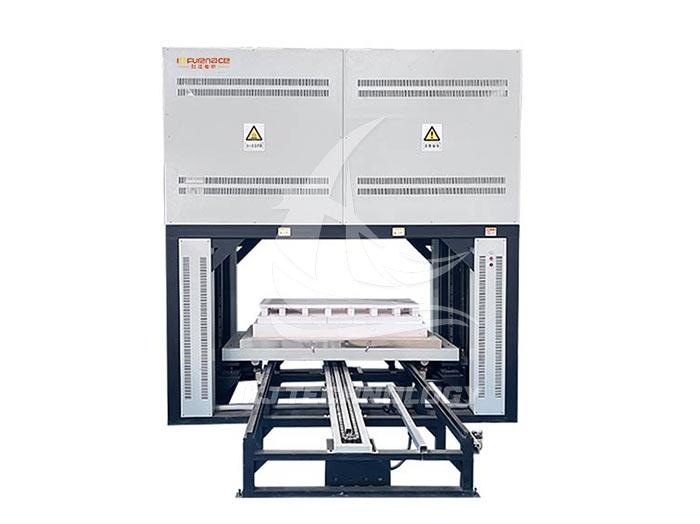Precautions for selecting atmosphere vacuum sintering furnace
 05-29-2025 Author: KJ technology
05-29-2025 Author: KJ technology
When choosing an atmosphere vacuum sintering furnace, comprehensive considerations should be made from multiple dimensions such as equipment performance, material compatibility, operational safety, economic costs, and supplier services. The following are specific precautions and analysis:
1. Core performance parameters
temperature control
Maximum temperature: Must meet the sintering requirements of the target material (such as silicon carbide ceramics requiring ≥ 1800 ℃).
Heating rate and accuracy: Heating rate ≤ 10 ℃/minute can avoid thermal stress cracking, and temperature fluctuations within ± 1 ℃ ensure process stability.
Temperature uniformity: The temperature difference inside the furnace is ≤± 5 ℃ (such as a 300mm diameter furnace) to ensure the consistency of material sintering.
Vacuum and Atmosphere Control
Extreme vacuum degree: High vacuum (≤ 10 ⁻³ Pa) is suitable for refractory metals, and low vacuum (10 ⁻¹~10 ⁻² Pa) is suitable for structural ceramics.
Atmosphere regulation capability: It is necessary to support the switching of inert gases (argon/nitrogen), reducing gases (hydrogen), and carburizing/nitriding atmospheres.
Leakage rate: ≤ 5 × 10 ⁻⁸ Pa · m ³/s, ensuring vacuum stability for long-term sintering.
Furnace size and loading capacity
Furnace size: selected according to the material volume (e.g. diameter 300mm x height 400mm furnace can accommodate 5L sample).
Loading capacity: It needs to be matched with the production scale to avoid uneven temperature or equipment damage caused by overload.
2. Material adaptability
Material type
Metal materials: prioritize high vacuum+inert atmosphere mode to avoid oxidation.
Ceramic materials: require high temperature uniformity and inert atmosphere to promote densification.
Composite materials require the ability to regulate the atmosphere and control interface reactions.
Process requirements
Sintering curve: The equipment needs to support multi-stage programming (such as heating insulation cooling) to meet complex processes.
Atmosphere protection: For active materials such as titanium alloys, a hydrogen reducing atmosphere is required to prevent oxidation.
3. Operational safety
safety protection
Overtemperature protection: Automatic power-off when temperature exceeds the limit to prevent equipment damage.
Vacuum protection: Alarm and stop heating when the vacuum degree is abnormal to prevent material oxidation.
Gas leak detection: equipped with hydrogen sensors to monitor the concentration of combustible gases in real time.
human-computer interaction
Operation interface: touch screen+PLC control system, supporting parameter preset and real-time monitoring.
Data recording: Automatically record parameters such as temperature, vacuum degree, gas flow rate, etc. for process optimization.
4. Economic cost
Equipment cost
Basic type: 100000 to 500000 yuan (suitable for laboratory or small batch production).
Industrial type: 500000 to 2 million yuan (suitable for large-scale production, customized configuration required).
High end model:>2 million yuan (with ultra-high temperature, ultra vacuum and intelligent control functions).
operating cost
Energy consumption: Choose efficient heating elements (such as graphite, molybdenum) and insulation materials to reduce power consumption.
Gas consumption: Optimize gas flow control to reduce waste of inert gases.
Maintenance cost: Choose easy to maintain components (such as modular vacuum pumps) to reduce maintenance costs.
5. Supplier Services
technical support
Process guidance: Suppliers need to provide sintering process parameter suggestions to shorten the debugging cycle.
Training services: Operators need to receive equipment operation and maintenance training to ensure safe use.
after-sale service
Warranty period: At least 1 year warranty, with a longer warranty period for core components such as vacuum pumps and heating elements.
Response time: Suppliers are required to respond to faults and provide spare parts support within 24 hours.
6. Summary and Suggestions
Clear requirements: Determine equipment performance parameters based on material type, sintering process, and production scale.
Cost effectiveness priority: Choose equipment with controllable costs while meeting demand, and avoid over configuration.
Supplier evaluation: Prioritize selecting suppliers with strong technical capabilities and comprehensive after-sales services to reduce long-term usage risks.
Based on the above comprehensive considerations, it can be ensured that the selected atmosphere vacuum sintering furnace meets the material sintering requirements while balancing economy and safety.








